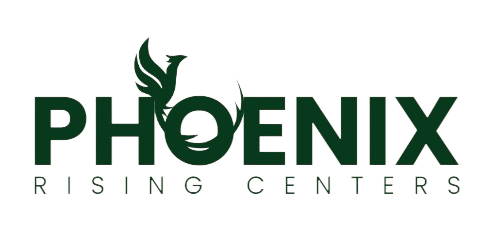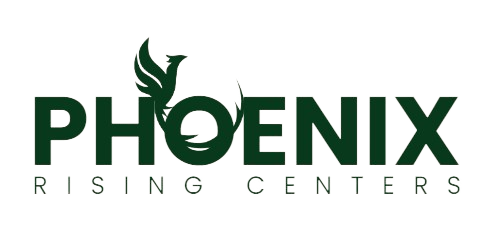Unlocking the Power of Community in Healing Therapies
In today's bustling world, healing has taken many forms, and one powerful catalyst for transformation is community. When we connect with others on similar journeys, we find strength, understanding, and collective energy that can propel us toward wellness and clarity. Let's explore how communities create a nurturing space for healing therapies to thrive.
Understanding the Role of Community in Healing
Communities offer more than just a physical space for gathering—they provide emotional and psychological support essential for healing. When individuals come together, they share experiences and insights that can be pivotal in the healing process.
One key aspect of community involvement is the sense of shared understanding it fosters. When people surround themselves with others who have faced similar challenges, they experience a unique kind of empathy and validation. This environment can alleviate feelings of isolation that often accompany life's struggles. Studies show that such social support can significantly reduce stress and improve overall well-being, thereby accelerating the healing process and increasing resilience.
Examples of Community-Based Healing Therapies
From group therapy sessions to wellness retreats, community-based healing therapies utilize the strengths of group dynamics. These approaches can foster deep connections and enhance personal growth through shared experiences.
Consider the widespread popularity of support groups for various mental health conditions. Such groups allow individuals to share their journeys, providing a space where each member can express their personal experiences without fear of judgment. These groups often include techniques like mindful listening and peer-facilitated sessions that encourage participants to share practical advice and empathy. They effectively create a sense of belonging, reassuring participants that they are not alone in their journey.
Community gardening projects are another unique example where healing therapies meet environmental stewardship. Gardening as a communal activity not only nourishes the body and spirit but also fosters a sense of achievement and self-worth. Participants engage with nature and each other, thus creating a therapeutic environment that can be particularly beneficial for individuals suffering from anxiety and depression.
Benefits of Healing in a Community Setting
Healing in a community setting provides benefits such as increased motivation, shared resources, and a sense of belonging. Participants often find that being part of a community offers a safety net that encourages them to push through challenges.
In addition to emotional support, community settings can facilitate the exchange of resources and information. For instance, book clubs that focus on self-help and personal growth enable members to share literature and insights that might have been overlooked individually. Furthermore, online forums offer a platform for asking questions, offering advice, and sharing success stories, thus broadening the scope and reach of healing therapies. Such networks transform learning into a collective experience, making the journey less daunting and more interactive.
A sense of camaraderie can also enhance motivation in individuals who may be struggling to maintain consistency in their healing practices. Group activities such as yoga, meditation, or exercise classes create an environment where punctuality and commitment are encouraged, often leading to steadier progress compared to solitary efforts. The friendly accountability fosters discipline, while positive reinforcement strengthens determination.
How to Cultivate a Supportive Healing Community
Cultivating a supportive healing community involves fostering inclusivity, active listening, and empathy. Community leaders can encourage open communication and create environments where participants feel valued and understood.
The first step in nurturing such a community is to establish a culture of openness and acceptance. Leaders should emphasize the importance of sharing without bias or judgment, ensuring that every voice has the opportunity to be heard. Providing structured opportunities for members to contribute—through discussion forums, workshops, or storytelling events—can help strengthen ties and build trust among participants.
Active listening is another crucial element in fostering a supportive community. It involves fully concentrating, understanding, and responding to what is being said. This not only nurtures deeper connections but also creates a safe space where members can open up and explore their feelings. Training community facilitators in active listening techniques can significantly enhance the quality of interactions and the effectiveness of the community as a whole.
Empathy and compassion are at the heart of transformative communities. Encouraging a mindset of shared wellness over individual achievements can lead to stronger bonds and more meaningful progress. Utilizing these guides to effective communication can aid facilitators and members alike in nurturing a supportive environment that benefits everyone's healing journey.
Real-Life Stories: Transformation Through Community
Real-life stories showcase how people have transformed their lives through the strength of community. From overcoming personal struggles to achieving shared wellness goals, these stories highlight the profound impact communal support can have on individual healing.
Take Sarah, for example, who was overwhelmed by stress and anxiety until she joined a local mindfulness group. Here, she found solace in guided meditation sessions and heartfelt discussions. The group's collective spirit helped her cultivate a sense of peace and clarity, eventually leading her to become one of the community's facilitators. Through her participation, she not only healed herself but also became a beacon of hope for others.
Similarly, the story of a neighborhood coming together to create a wellness hub is inspiring. This community-driven initiative hosts various activities, from fitness classes to nutrition workshops, all designed to enhance physical and mental well-being. Participants like John realized substantial improvements in his health and social life, attributing his transformation to the constant encouragement and friendship found in the supportive environment. These stories emphasize the undeniable power of community in healing therapies, proving that together, anything is possible.
Harnessing Community for Collective Healing
Communities have a unique capability to empower, support, and uplift individuals on their healing journeys. Whether through collective meditation, shared stories, or mutual encouragement, the power of community in healing therapies is undeniable. As we embrace these connections, we unlock new pathways to wellness, proving that together, we are truly greater.


